Reviewed: 4 of The Best Greenhouse Lights

This post follows our research editorial guidelines.

When it comes to successful plant growth, supplemental lighting is a key factor in order for your plants to thrive. However, it can often be difficult to supply plants with the correct amount of lighting they require. Some grow best in direct sunlight, whereas others can be damaged by this.
So why are grow lights needed in a greenhouse? During winter months, there is generally less natural sunlight, and depending on the type of plants you have, some may need a specific amount which can be fixed using certain greenhouse lights. Incandescent, hif lights, hid lights, LED lights and fluorescent lights can all be used no matter where you choose to grow your plants.
Searching for the perfect lights for your greenhouse can be confusing as there are a variety on the market, each with a different purpose. Luckily for you, this article will explore a whole range of greenhouse lighting options, so there’s bound to be at least one you like the sound of.
Ready to find out more? Let’s get to it.
Attention Garden Lovers: This post contains handpicked links to recommended gardening products. If you buy something through these links, I may earn a small commission at no extra cost to you.

Table of Contents
Light Emitting Diode (LED) Lights
LED grow lights are popular due to their energy efficiency and lifespan. On average, they consume around 90% less energy than a typical incandescent bulb and some last up to 50,000 hours.
One main advantage of using LED lights, or even fluorescent lights in a greenhouse is they produce little to no heat meaning the area temperature is not affected. After all, even the slightest change in temperature can mean dire consequences for your plants.
Overall, LED lights have lower operational costs when compared to standard incandescent bulbs. You may not notice such a difference if you own a small greenhouse, but if using them in larger, commercial greenhouses, you will certainly begin to reap the benefits over time.
So, while we’re on the subject, let’s check a few out.
LED Grow Light, Roleadro 75W Grow Light for Indoor Plants
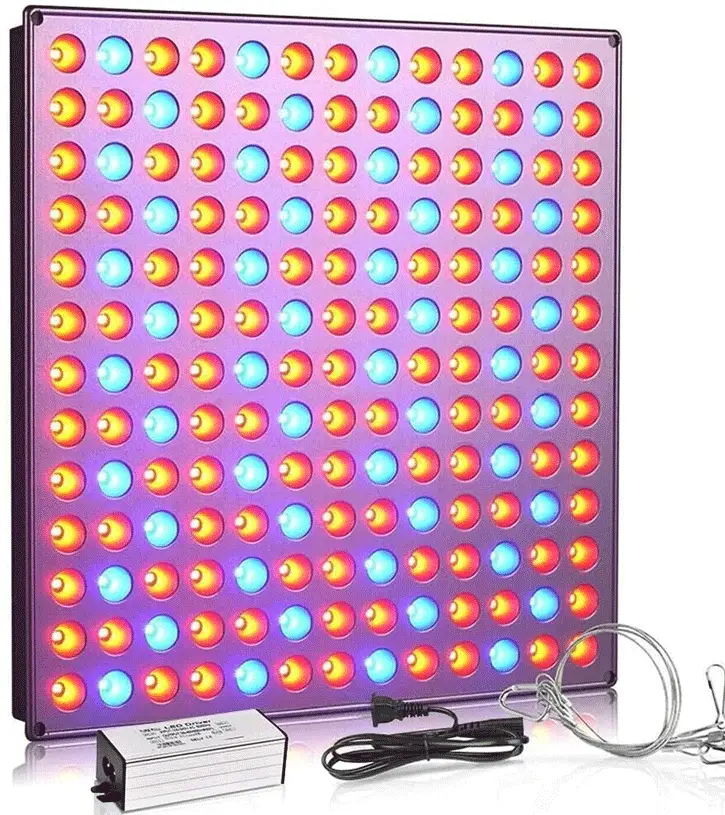
The Roleadro 75W grow light is ideal for growing delicate, tropical plants to the more mundane fruit and vegetable crops. Described as a ‘seedling light’, this device can be used from the very beginning up until your plants are fully grown due to the full spectrum on white, red and blue light.
Created with a heat dissipation design, you won’t have to worry about heat being transferred to your plants even when set to high power.
Pros
- Lightweight and easy to install due to the hanging brackets.
- Cost effective at less than $40 and energy efficient.
- Manufactured by a reputable company (Roleadro) with 11 years of experience in the industry.
Cons
- If you are a first time user, there is little information included to describe how to use them (e.g. how far away from the plants they need to be).
Phlizon 2022 Upgraded 600W LED Plant Grow Lights
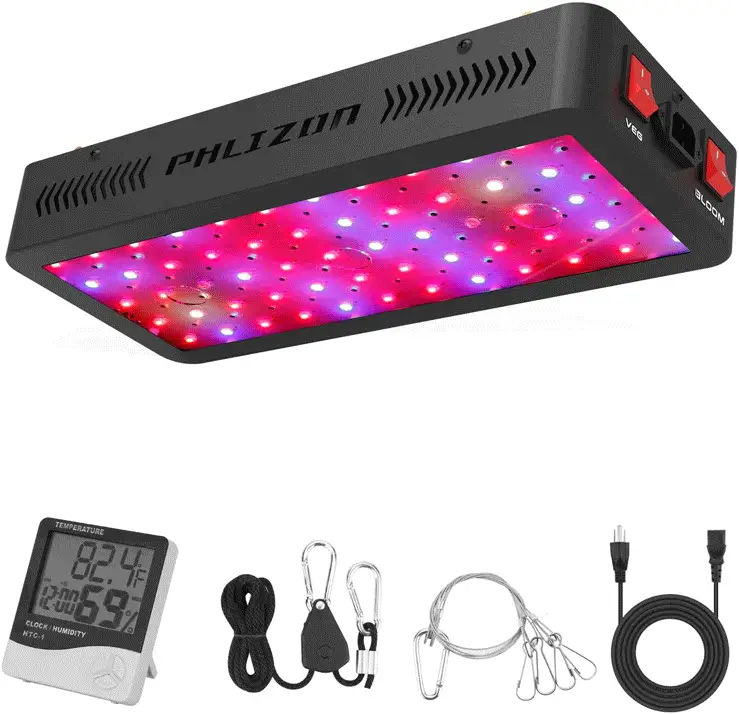
At less than $100, the Phlizon 600w grow light offers up to 50,000 hours of light for your growing plants. While most grow lights are designed with a reflector for cosmetic reasons, the Phlizon was created without one to reduce hazards. This device includes quiet double cooling fans to keep the risk of heat at a minimum.
Pros
- Double switch function to switch between lighting for seedling/young vegetative stages, and lighting for plants that are in bloom/flowering.
- Comes with a 2-year warranty and 30 day money-back guarantee
- Affordable and reliable particularly for use in indoor grow tents and small greenhouses
Cons
- I wouldn’t recommend for use in a large/commercial greenhouse as the dimensions are small (15.7 x 6.7 x 2.3 inches)
- Some people have found that the lighting quality is not the same in each product when ordering multiple units
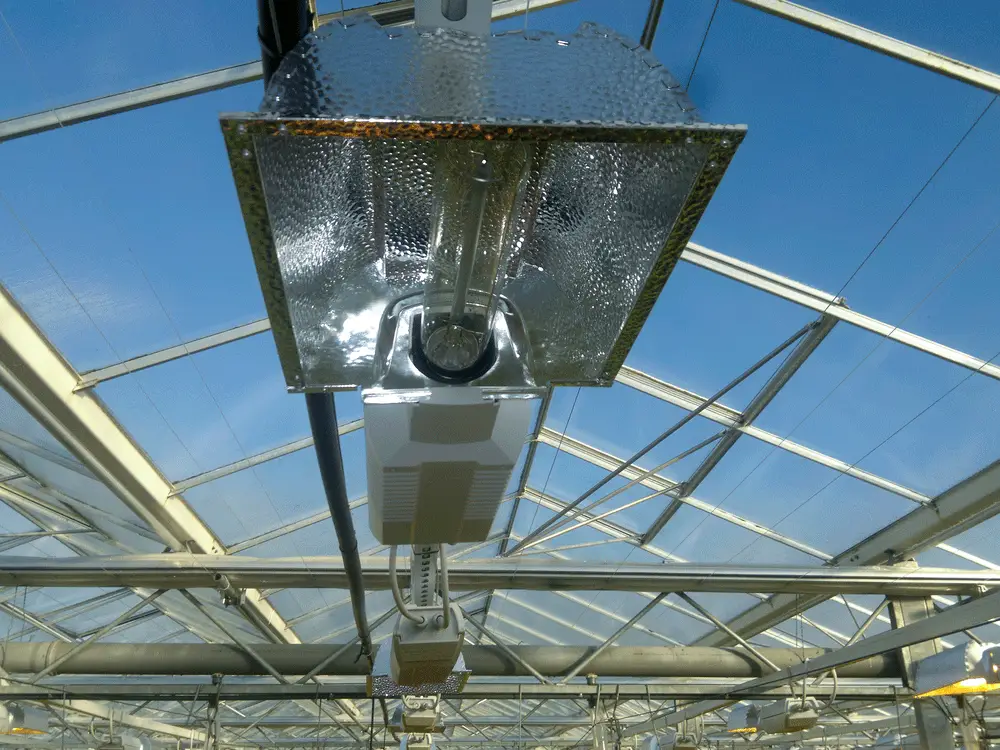
Halogen Lights
Halogen lights (or lamps) can be used in greenhouses, although most are quite pricey and they can also be terribly difficult to install. Growers use halogen lights for their heat output, which increases heat in a greenhouse during the winter period.
Types Of Halogen Lights
Let’s take a look below at the different kinds of halogen lights.
Incandescent Bulb
Incandescent and halogen lights are technically the same. The only difference is that halogen bulbs allow for higher temperatures and are more energy efficient. This is down to the use of halogen gas. Incandescent lights use an argon gas mixture which means the tungsten filament does not last as long as that in a halogen light.
Halogen Floodlights
These are the best greenhouse grow lights, or outdoor lights, as they are designed using thick glass which helps to withstand certain weather conditions. The heavy glass used is known as PAR (parabolic aluminized reflector) which makes it a perfect choice for other outdoor places such as decks, boats or even parks. They are also ideal for home security reasons.
Benefits of Halogen Lights
- Halogen bulbs are the brightest bulbs available and are the best way to mimic the sun.
- They remain bright for long periods of time compared to other bulbs which often begin to fade.
- They don’t contain mercury like other bulbs which don’t last as long and can be harmful to the environment if not disposed of correctly.
Using Halogen Bulbs
It is a good idea to combine halogen bulbs with natural light whenever you can so that your plants are getting the best of both. Halogen lights are best set around 6-12 inches away from your crops as they do emit a high amount of heat.
This can disrupt the quality of the air and temperature in your greenhouse, so it is always a good idea to use a joint thermometer/hygrometer device to record these results.
VIVOSUN Clamp Lamp Light with Detachable 8.5 Inch Aluminum Reflector
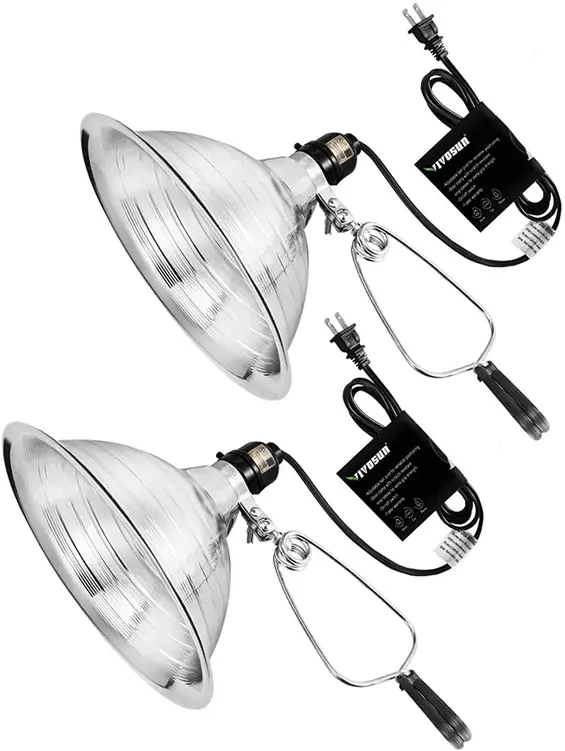
Designed with ball joint connections, this flexible lamp is ideal for use in greenhouses as well as art studios and rooms for photography.
Vivosun is a reputable company known for manufacturing high quality garden gear. So it’s no wonder that this clamp light is so popular amongst other growers.
Pros
- The reflective aluminum material improves the efficiency of the product by increasing reflection.
- Easy to install with the use of a strong clamp that can be placed anywhere.
- Light in weight, they are easy to move around if needed.
Cons
- Bulbs are not included which only increases the cost
- The clamps do not have the best grip compared to others
Woods L13 Twin Head Work Light
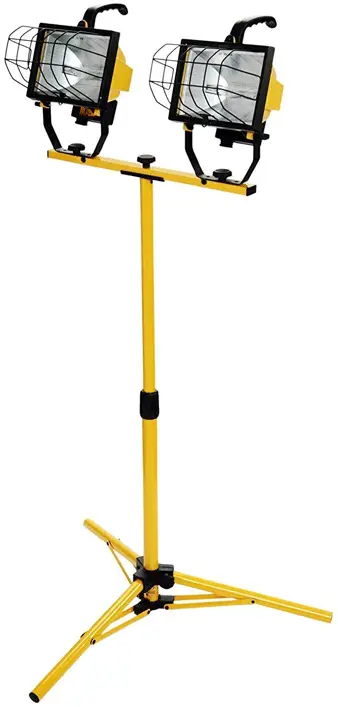
This affordable, weather-proof halogen tripod lamp can be used for a variety of reasons and not just for use in your greenhouse. You can use it for home security, work projects, or take it on a camping trip to illuminate your surroundings when away from the city lights.
The powerful 2500 watt bulbs are bound to give your growing plants the support they need, particularly during the winter months. The tripod can reach a height of 42 inches while the head lamps are able to rotate a full 360-degrees to give you that flexibility without having to move the device around.
Pros
- The lamp is designed with a shadow fighter grill to prevent shadows blocking the other plants.
- Easy to assemble and appropriate for a large/commercial warehouse
Cons
- The bulbs get extremely hot, therefore this should be considered before purchasing
- Not intended for growing plants
- The stability of the legs is questionable and may struggle in areas where the ground is not flat.
How To Use A Light Meter
Light meters are used in greenhouses to help growers understand how much light is needed to help plants and crops thrive and can also speed up production.
Light meters are often used in photography to measure how dark or light the subject is. In gardening, light meters are used to judge the amount of lux (lumens) and PPF or PPFD (photosynthetic photon flux density). The results of these measurements tell the grower how much PAR (photosynthetically active radiation) is in a plant. This is the range of light that a plant uses.
Follow my guide below to find out how to use a light meter in a greenhouse.
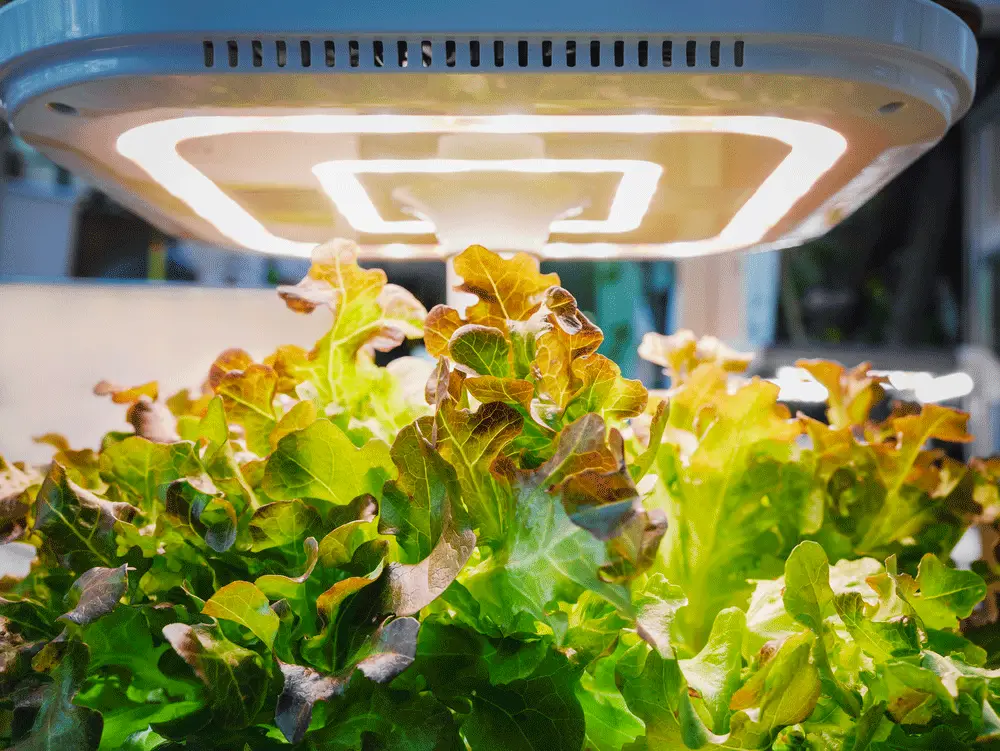
Step #1: Clean Your Sensor
To begin with, you need to make sure the sensor you are using is free from dust or dirt. Use a soft cloth and apply deionized water to remove any debris.
Step #2: Choose The Correct Setting
Some light meters have settings such as ‘sun’ or ‘electric’. It is important to choose the correct one as the correction factors are different for each setting which will affect your results.
Step #3: Get Measuring!
Time to measure the lighting. Depending on the size of the area you are measuring, you may need to use the light meter in multiple locations.
Depending on the type of light meter you choose to take measurements, you may find yourself repeating these steps periodically throughout the day. Some quantum meters can be hooked up to computer systems so that the data is logged automatically. However, this can be costly, so it really depends on how serious and dedicated you are to your greenhouse.
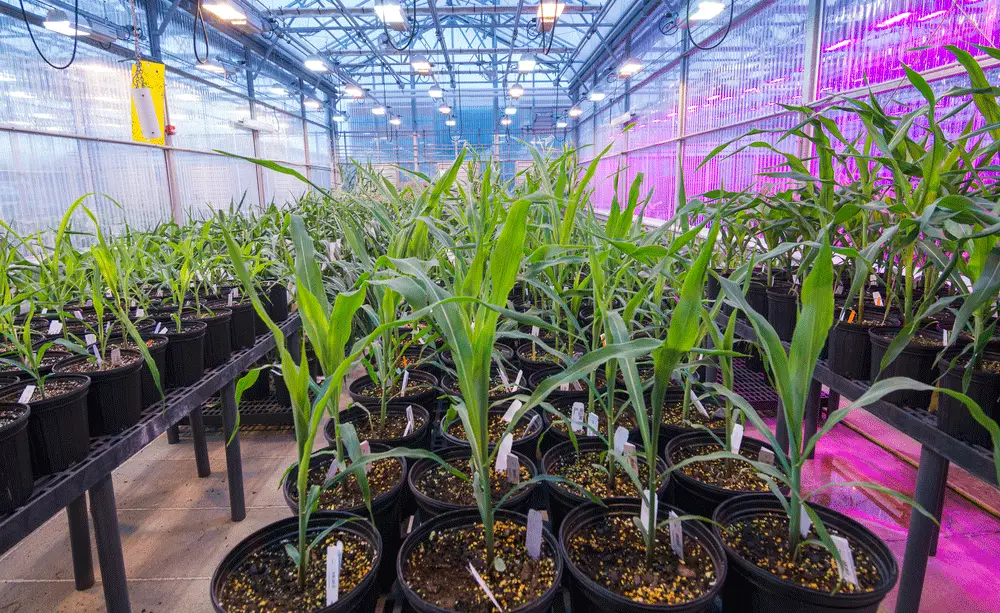
FAQ Section For Best Greenhouse Lights
If you can’t find the answer to what you were looking for above, my FAQ section may be of help. Let’s take a look.
How Much Is Too Much Light?
This depends entirely on the type of plant you are growing. Excess light can cause irreparable damage, and not even can also have the same effect. Research the weather conditions of where your plants originate and then try your best to mimic them.
Can Grow Lights Help Plants Grow Better?
Yes absolutely. This is particularly true for plants that are grown in warmer areas of the world where sunshine is aplenty. However, there is a difference between light duration and light intensity. Both of which can damage your crops if they receive too much.
When Should You Use Grow Lights In A Greenhouse?
You should aim to only use grow lights in a greenhouse during the winter months when there is less natural light. Light exposure is essential, particularly in the beginning stages when the seedlings are growing.
Final Thoughts
I hope this article has been helpful in letting you know what kind of lights are best for a greenhouse. It is important to think about the size of the space and how old your plants are when considering your purchase. Is your plant a seedling, or fully grown? How much sunlight does it require and for how many hours a day? All of these questions will help make your decision easier.

Before you go!
11 Trees with Heart Shaped Leaves
Best Greenhouse Heaters
11 Houseplants with Red Leaves
How to Keep Your Greenhouse Cool in the Summer?